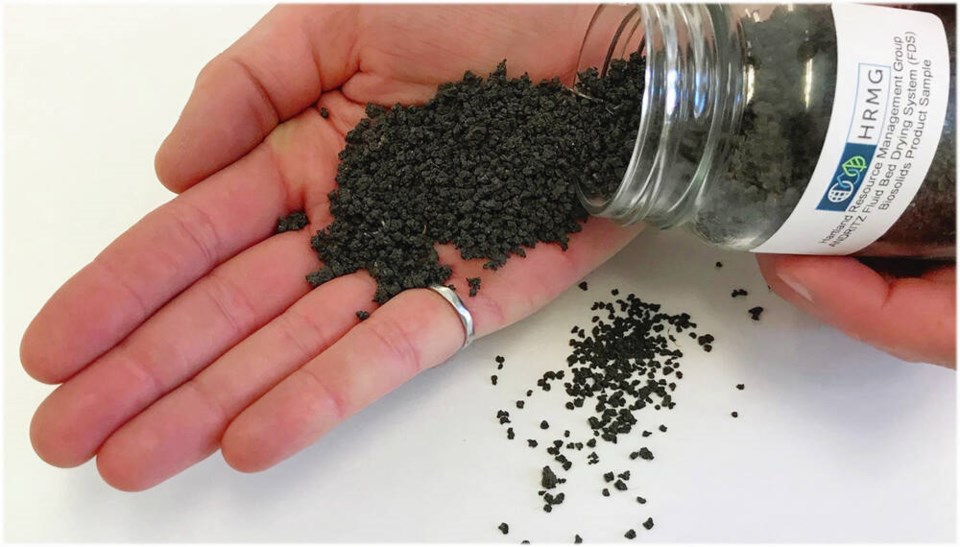A commentary submitted by Dave Cowen on behalf of the members of the Peninsula Biosolids Coalition: Mount Work Coalition, Saanich Inlet Protection Society, Biosolids Free BC, The Butchart Gardens, Peninsula Streams and Friends of Tod Creek.
Management of the region’s biosolids continues to be a public health and environmental challenge for the Capital Regional District.
Despite the CRD board reaffirming its ban on land application in July 2023, the public consultation site for the CRD’s Long-term Biosolids Plan puts forward land-based disposal solutions that contravene CRD policy.
The options fail to reflect current scientific understanding about the risks of land application to public health and our environment.
The CRD is well aware that Health Canada is adding “forever chemical” components of biosolids to the list of toxic substances under the 91原创 Environmental Protection Act, 1999, and that research continues to highlight health risks associated with exposure to microplastics, perfluoroalkyl substances (PFAS), polycyclic aromatic hydrocarbons (PAHs), dioxins, and other emerging chemicals of concern.
Regardless, the CRD is seeking public input on use for agricultural fertilizer, urban landscaping, local forest fertilization and — of all things — bagging sewage sludge compost for residential use.
Of concern, none of the scientific information on potential harms is shared with the public via this CRD consultation.
There is not one word about well-documented risks to public health and the environment of spreading biosolids on land, nor any reference to considerable science on the “forever chemicals” contained in biosolids.
Nor does the public consultation material share that food retailers such as Thrifty Foods refuse to buy produce fertilized with biosolids, and that most of the region’s farmers have long refused to use them.
Spreading biosolids in urban areas, such as fertilizing playing fields and boulevards where the risk of exposure is greatly increased, is even more unacceptable.
UCLA researchers assert sewage sludge is an increasing vector for spreading microplastics via wind dispersal, potentially increasing exposure risk to both microplastics and the other toxic chemicals in biosolids that bind to them when they become windblown.
The CRD consultation fails to note these risks, or the ever-increasing risks of environmental spread of PFAS via the unsafe dispersal of biosolids.
To ensure meaningful public consultation, the CRD must stop the process and remove the biased site.
Before undertaking public consultation, the CRD board must proceed with an unbiased third-party academic assessment of the scientific and legal understanding of the risks and benefits of various biosolids disposal methods.
This approach was passed by Esquimalt Mayor Barb Desjardins and the Environmental Services Committee, but has not been acted on by staff.
The findings of this independent review must then be reviewed by the technical community advisory committee that the CRD convened for this purpose, and the results publicly presented using the “triple bottom line approach” the board has committed to.
This would not just focus on costs, but include information about the environmental impact of each option, social considerations and explain historical public support or opposition.
A renewed consultation must provide more about land application risks, along with a detailed chemical analysis of what the region’s biosolids contain.
Full analysis has not been disclosed, and all public documents refer to biosolids compliance with the province’s outdated and inadequate Organic Material Recycling Regulations. These rules do not assess or regulate “forever chemicals” and other chemicals of emerging concern, despite their known harms.
Finally, it is also unacceptable that the consultation is only accessible online via a biased survey. This important topic requires in-person engagement so the process can be inclusive and foster civic participation among diverse community members.
Our coalition is pleased the CRD is testing disposal through “gasification.” Using technology to mitigate the toxic “forever chemicals” found in Class A biosolids, inert biochar is produced that can be safely used for carbon sequestration as well as energy production as an alternative to fossil fuels. It creates far less greenhouse gas than landfilling.
Also known as pyrolysis, gasification is common in Europe, and avoids the environmental and public health risks of land application.
While this poorly designed consultation unravels, the daily dumping of tonnes of biosolids continues at the Hartland Landfill. This is a clear risk to the surrounding watershed, farms, recreational areas, homes and businesses.
The Peninsula Biosolids Coalition is therefore calling for a restructuring of the public consultation for long-term safe biosolids disposal, and for an immediate end to spreading biosolids at Hartland.
>>> To comment on this article, write a letter to the editor: [email protected]



